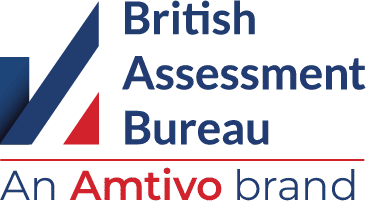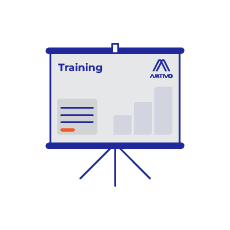In any business, it is normal for mistakes to happen and yet, whether those mistakes are small or large in impact, lessons need to be learned and measures taken to prevent the mistakes from happening again. A corrective action plan can be helpful in this process.
A corrective action plan is typically a documented approach to addressing an issue that has been identified within a business or organisation. It should enable stakeholders to efficiently specify, quantify and resolve these issues within the criteria set by the leadership team. These criteria could relate, for example, to time (setting a deadline), or cost (setting a maximum budget). Whilst corrective action plans can positively assist organisations to resolve almost any type or size of issue, typically, they are used to address significant or fundamental issues that are identified. These may relate to problems with a product or service, which have been brought to light through a customer complaint. It may also relate to ‘non-conformities’ with relevant ISO standards, which are identified during an audit.
How Do Corrective Action Plans Support ISO Certification?
In ISO certification terms mistakes are often referred to as ‘non-conformities’ or ‘NCs’, for short. NCs come in two different forms – major and minor.
- Minor non-conformities are generally small mistakes that can be easily resolved.
- Major non-conformities tend to relate to situations or events that prove to be more significant and, possibly, systemic. If these types of situation are identified and are not handled quickly and effectively, they can leave the entire organisation susceptible to negative consequences.
How Do I Create a Corrective Action Plan?
An effective corrective action plan typically has five steps within it:
- Identifying and documenting a description of the issue
- Preventing the problem from getting worse
- Completing a root cause analysis
- Determining the corrective and preventative actions and timescales for implementation
- Testing the effectiveness of the corrective actions.
Below, we have broken down these steps in further detail.
STEP 1: Identifying and documenting a description of the issue
The starting point should always be to produce a detailed description of the issue, including high level summary of how it has arisen, how it came to attention, what the impact has been and who the stakeholders are. At this stage it is helpful to identify ownership of the issues in order to put together the necessary project team (if this is required).
STEP 2: Preventing the problem from getting worse
In some instances, the issue at hand may be one that, if left untreated, could get worse and thereby negatively impact the organisation further. Therefore, it is important to put measures in place to prevent this from happening while investigations take place and before corrective actions can be implemented.
STEP 3: Completing a root cause analysis
There are several different useful processes that can be utilised in order to adequately identify root causes. Some of these processes include:
- The 5 ‘whys’
- The use of ‘fishbone’ diagrams
- The Failure mode and Effects Analysis (FMEA) methodology.
Essentially, the root cause should identify the reason behind why the non-conformity, error or issue arose in the first instance. In order to ensure the root cause analysis is completed effectively, it’s important that those people who are responsible for undertaking the analysis are properly trained and/or qualified.
STEP 4: Determining the corrective and preventative actions
Once the root cause (or causes) has been identified the organisation will want to prevent the issue from reoccurring. It will therefore be necessary to use the insights gained from the root cause analysis to devise a plan for addressing the issue(s) in a way that will minimise or remove the risks of it happening again.
STEP 5: Testing the effectiveness of the corrective actions
In order to understand the overall effectiveness of your corrective actions it’s a good idea to conduct a period of post-implementation testing. This could be useful, not only to understand the effectiveness of your corrective actions, but also to highlight any additional areas that may need addressing. Taking the opportunity to evaluate the impact of your corrective actions also allows you to identify and conduct any training that may be required for end users.
How Might the Corrective Actions Process Look, in Practice?
To demonstrate how the corrective actions process might work, we have provided an example below:
STEP 1:
It has been identified that a packing machine has been dropping items on the floor and causing wastage. This is also presenting a health and safety issue given that the droppings cause obstruction of walkways. This has been assigned to the production team lead.
STEP 2:
Immediately shut the machine down and take this out of use. Clear all droppings from walkways and inform users that the machine is out of action.
STEP 3:
Utilising the 5 ‘whys’, lets establish our root cause:
Why #1: Why does the machine drop parts on the floor?
There could be several reasons for this, such as:
- A broken part is causing the conveyor belt to jolt at a certain point
- The conveyor belt isn’t wide enough
- The surface of the conveyor belt is not compatible with the packaging and causing slippage to occur
In this example, it is discovered that a gear or joint is likely broken.
Why #2: Why is the machine part broken?
One of the gears or joints could be broken due to general wear and tear. A service of the machine’s conveyor belts may be required to ascertain where the break is. It is identified that the conveyor belt is out of its usual service period, which is why the break wasn’t identified earlier.
Why #3: Why was the conveyor belt not serviced when it was supposed to be?
You identify that the Production Team Lead was absent from the business for a long period of time and, therefore, the usual inspection reporting had not been completed.
Why #4: Why was the inspection reporting not picked up by another team member?
You identify within your organisation’s business continuity plan, that it does not list the Production Team Lead as a key person. As a result, there is no contingency plan in place for when the Production Team Lead is not available.
Why #5: Why did the business continuity plan not identify this role as a key role within the business?
It is established that the business continuity plan has not been tested in some time. As a result the plan had not factored in the growth in staff numbers within the business or many of the newer roles, including those of ‘key people’.
STEP 4:
As a result of the root cause analysis, several corrective actions are identified as being required in order to rectify this issue:
- Complete a robust service of the machine and replace any broken parts, replace oil where required and clean the machine immediately.
- Review and record all roles within the business and identify any team leads or key roles
- Document all key roles/personnel within the company Business Continuity Plan (BCP)
- Ensure there is a contingency plan noted within the BCP against each key role
- Conduct a test of the BCP to ensure its effectiveness.
STEP 5:
Once all of the above action points have been actioned and implemented, conduct a test of the machine to ensure it is working effectively and then review the BCP testing results to ensure this is now fit for purpose.
In Conclusion
It is normal for mistakes and oversights to happen within an organisation and therefore it’s important to get into the practice of learning from them when they do. Having a robust process for identifying the root causes and responding to them can help to prevent them from happening again. It also shows your stakeholders (such as your staff, board or investors) that you are committed to continual improvement.



